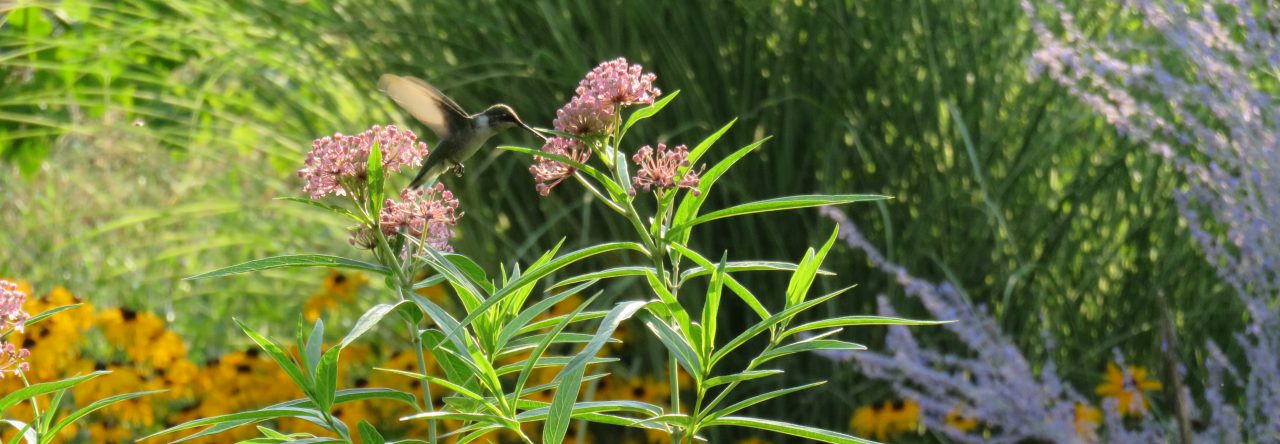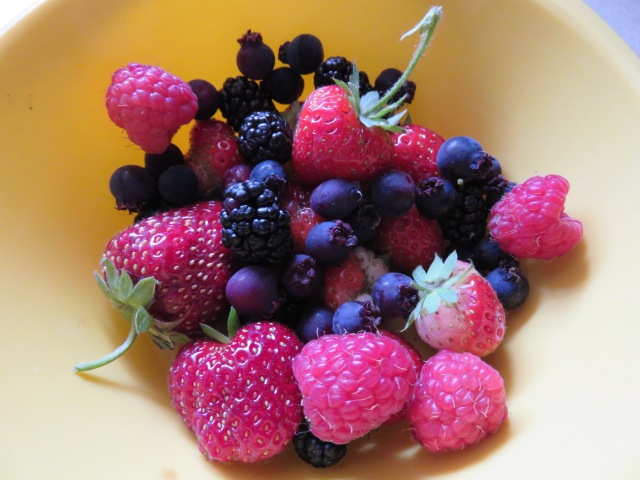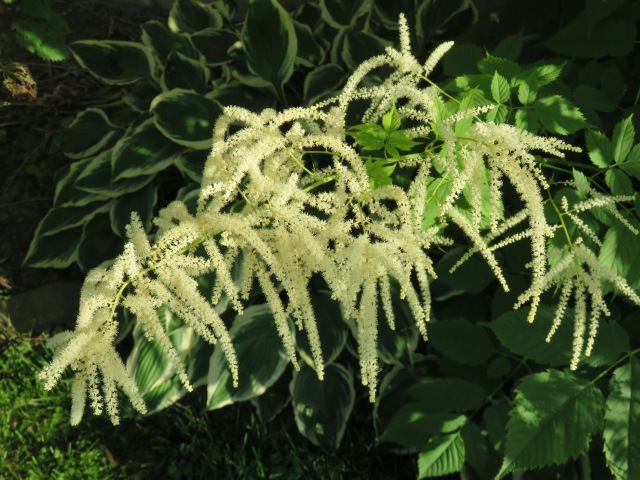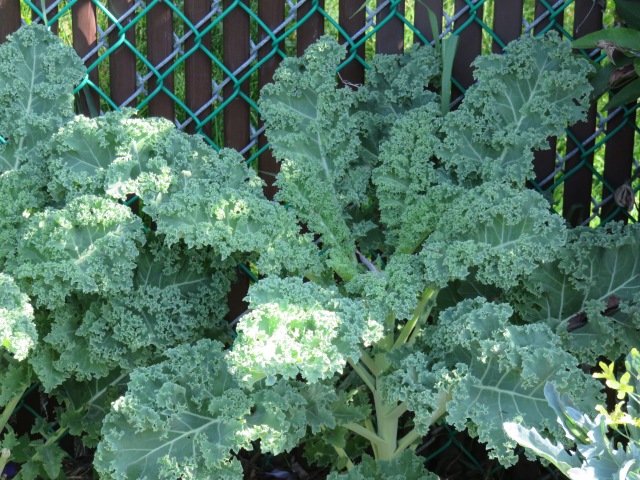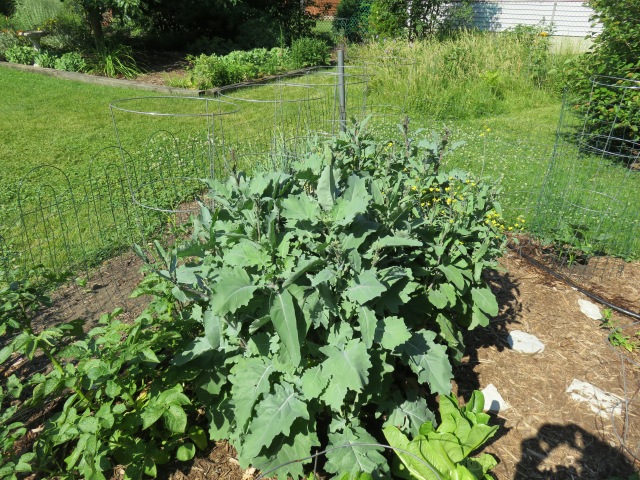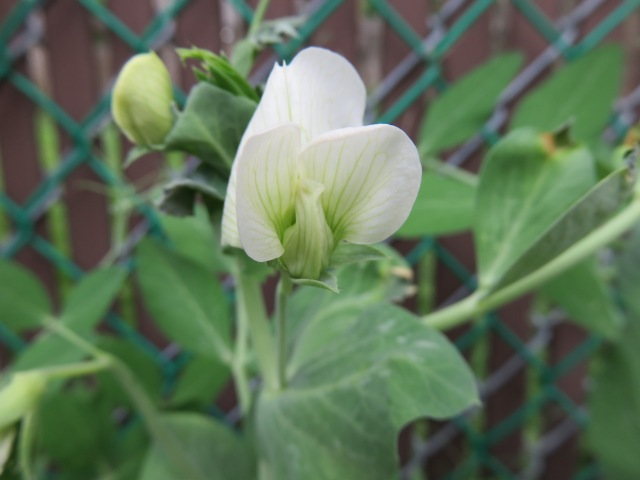Birds are migrating. Insects are slowing down. The last flowers are blooming. The last vegetables are being harvested. Here are a few pictures.
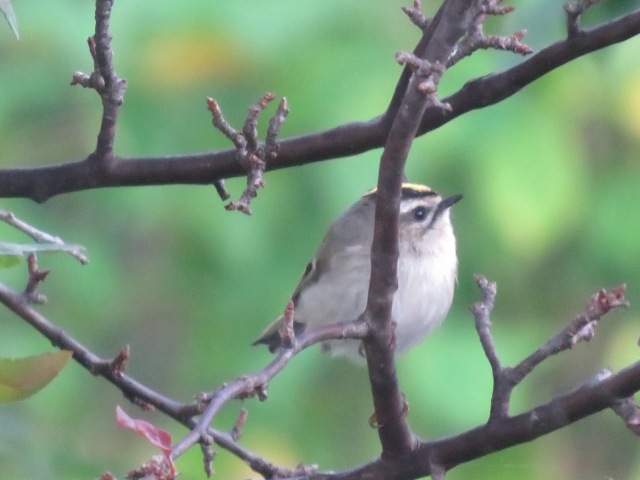
Two weeks ago I saw this golden-crowned kinglet hopping around the crabapple tree.

I am not sure what kind of moth this was, but it let me get close as it gathered nectar from the marigolds today.
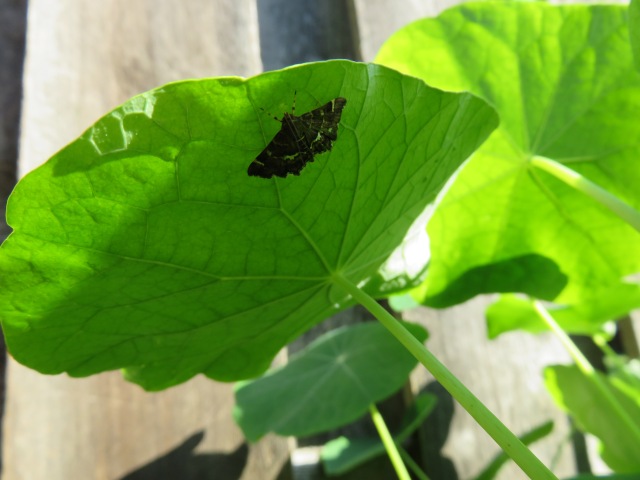
This little moth was taking shelter under a nasturtium leaf.
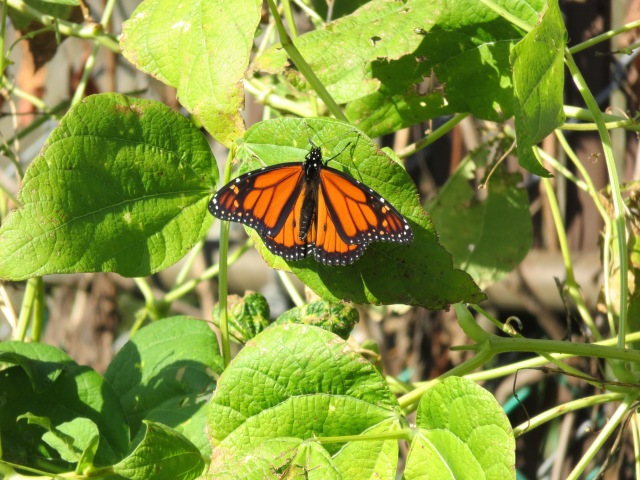
We still have a monarch butterfly hanging around the zinnias. When the zinnias are covered with fall shade for a while in the afternoon the monarch moves to the pole beans.

Nearby a grasshopper was moving slowly.
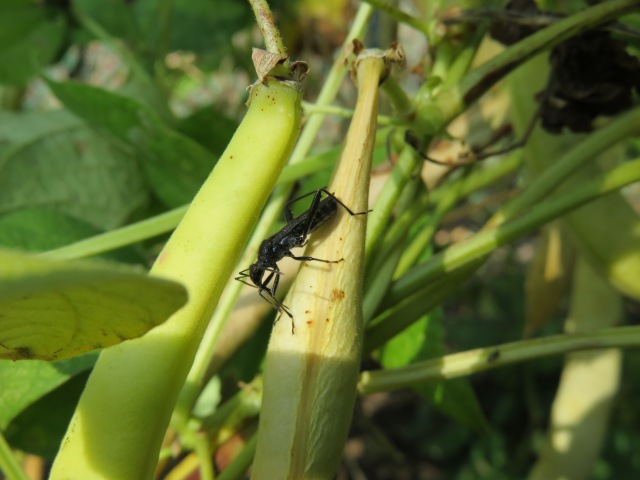
I think this is a black cricket, also on the pole beans.

The coral mums have been blooming for a while, attracting a lot of bees and flies.

A closer look at the mums. I think that is a hover fly, though it could be a bee…

The pineapple sage is blooming wonderfully, but the hummingbirds have left to fly south now. I think there are still a variety of small pollinators enjoying these red tubular flowers.

Just a few gaillardia flowers are still blooming, but the bumble bees really love them. The white flowers are alyssum.
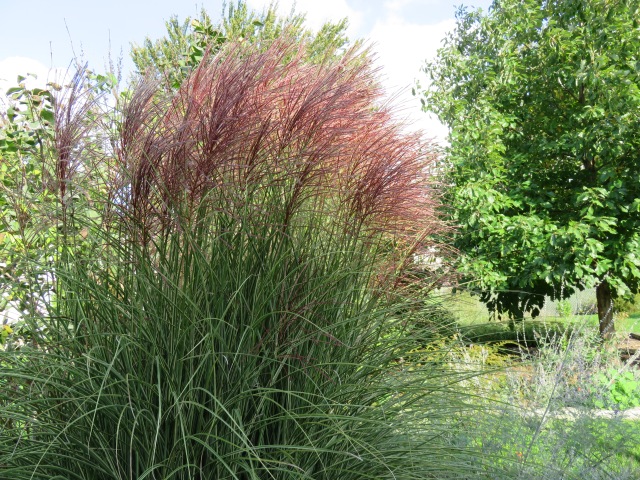
The ‘morning light’ miscanthus grass is at its peak now and is at least 6 feet tall this year.
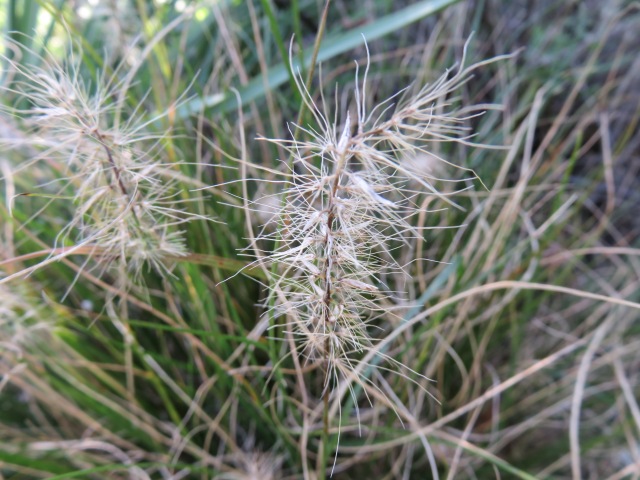
Seed heads of ‘little bunny’ pennisetum grass

Strawberry flower and little strawberry. You never know what you will find around the garden.
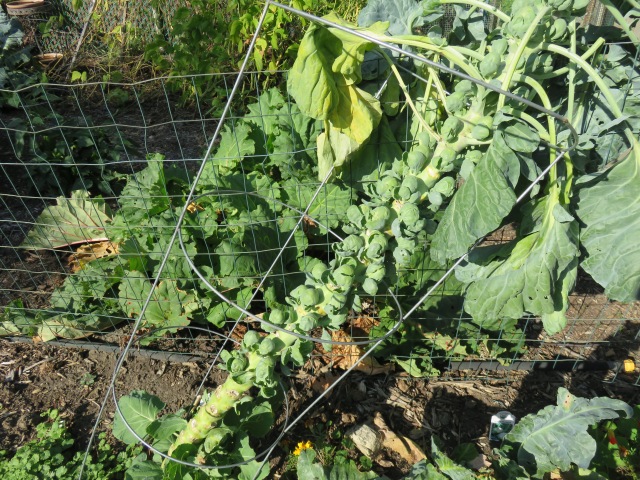
We are gradually adding brussel sprouts to our soup each Sunday.
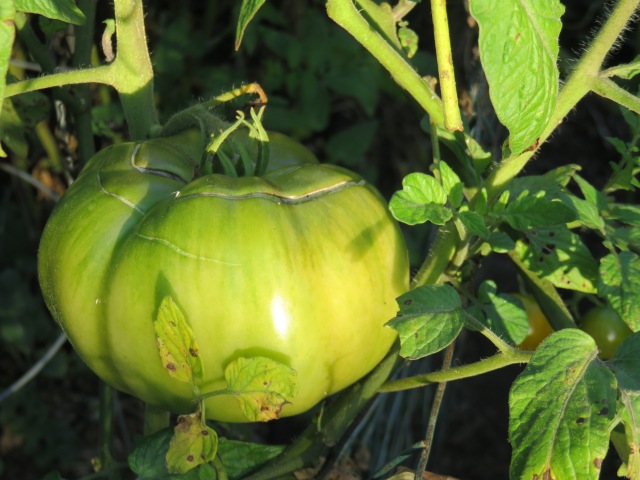
I took a look today and there are a lot of green tomatoes in the garden! I don’t see frost in the forecast, but I will keep my eye on the weather report.

My Arab neighbor friend is back from Jordan and came to gather a bag full of collard leaves. Quite a few of the collard leaves are chewed by worms, and she did not want those, because I think she uses them to roll up a spicy meat dish. We totally welcome someone to share these greens with.

Last Saturday was my first day with a volunteer team of around 20 people that were cutting brush and burning. We were almost exclusively cutting back Eurasian bush honeysuckle. We had two big bonfires going.

Today Dan and I just took a wonderful early morning walk through the prairie and forest at Spears Woods in the Palos forest preserve. We bumped into the volunteer crew as we were leaving. They were getting ready for another productive day. By clearing the invasive shrubs they are opening up the ground for native plants to thrive, which in turn provides habitat for a greater variety of birds, insects, and other wildlife. With habitats diminishing everywhere for so many species this is valuable work, in order to maintain healthy ecosystems.
